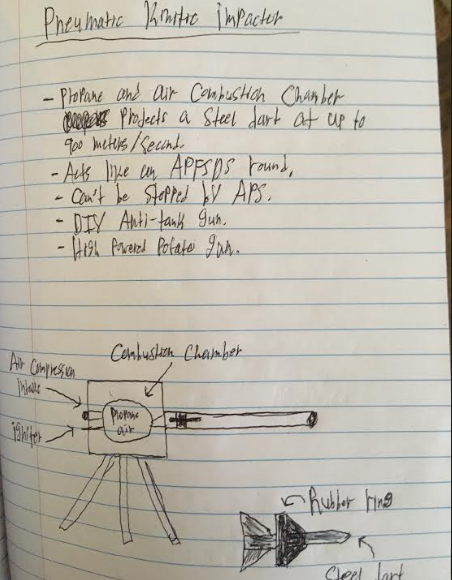There are many ways around a tank's active protection system (APS.) APS systems include the Israeli Trophy system. The trophy is mounted on the Merkava tank and the system makes it very difficult for RPGs and ATGMs to hit it.
The first method is to use ballistic shields on RPGs to deflect the APS projectiles. This would prevent the RPG from being destroyed before it hits the tank. The shield could be held in place would wood sticks and epoxy. This would break upon impact with a tank, detonating the RPG, but would not be broken by APS projectiles. The shield could be 6 millimeters thick.
A similar option is to armor RPG rounds, preventing them from being destroyed before impact. The impact fuse on the RPG would be left unarmored.
Another novel method is to attach a decoy shell to the front of an RPG. This decoy would be hit by the active protection system projectiles and allow the real rocket to hit the tank. It could be placed on the RPG with ridged wire or wood sticks and be almost one meter in front of the RPG round. It would be lightweight so the trajectory of the round would still be fairly accurate.
A low velocity RPG could be created to be launched out of a pneumatic "potato gun" constructed of simple PVC or metal. This would allow the RPG to travel below 70 meters per second, a blind spot on the APS radar. This would allow the RPG to hit the tank undetected by radar. Many APS system's minimum engagement speed is 70 meters per second, Trophy is likely similar.
Potato gun
A modified RPG to be fired out of a potato gun. A rubber ring in built on it to build air pressure. Modified fins are constructed as well. The rocket motor is removed.
A high velocity pneumatic gun could be constructed to fire steel dart kinetic impactors. These would not be able to be intercepted by the Trophy APS. Firing at speeds of 500+ meters per second it could potentially penetrate the hull of a Merkava tank.
High velocity propane "potato gun."
This bears similarity to tank fired APFSDS shells.
A "potato gun" launched carbon fiber RPG would be even more effective. Carbon fiber has a very low radar reflectivity, meaning it may not be sensed by the APS radar even if it was traveling above 70 meters per second. An internal metal structure would be needed for the explosives, but externally it would be almost 100% carbon fiber. It is better to launch it with a potato gun, as a traditionally launched RPG would still need to have metal parts, which reflect radar.

A large rocket could be mounted horizontally and launched at a tank. It could be up armored to withstand APS projectiles hitting it. The rocket's large amount of explosives would cause serious damage if it hit the tank.
A higher velocity dual launcher could be constructed out of a potato gun. One RPG could be fired one after the other. The first may be hit by the APS, but the second RPG would hit the tank. Three or four barrel versions could also be constructed.
Double barreled potato gun.
A radio/radar jammer could be used with the correct frequency to render the APS useless. Trophy likely operates in the 20-30 Gigahertz range. The Russian Drozd APS operated at 24.5 GHz. This frequency could be broadcast back at the tank's radar with a radio antenna and allow RPGs and ATGMs to hit the tank while its radar is jammed.
Trophy Radar.
A way to jam radar is to fill a modified RPG with epoxy paint and aluminum strips to act as chaff. The RPG is designed to be detonated by the APS and it will coat the APS radar with epoxy and chaff, disrupting its radar signals. This would allow anti-tank missiles to hit the tank.
Parachutes and fins could be attached to RPGs to slow them below 70 meters per second and allow them to hit the tank undetected, as they would be flying too slow to detect. This would reduce the RPG's accuracy, however.
Another option is to attach "corner reflectors" to an RPG to increase its radar signature. The radar signature would be so large it may trick the APS into not engaging the RPG.
Corner radar reflectors. These could be easily manufactured.
RPGs could also be coated with radar absorbing material. Graphite or similar carbon compound could be suspended in epoxy and painted on an RPG. Alternating layers of graphite and sawdust could be used to increase the gigahertz frequency that is absorbed to 20 to 30 GHz. This is the Jaumann layer radar absorption method. Eight layers of absorbing material and eight of polyethylene, silicone or sawdust layers would be needed to absorb the correct wavelength. This layered slab would be about 40mm thick.














































No comments:
Post a Comment